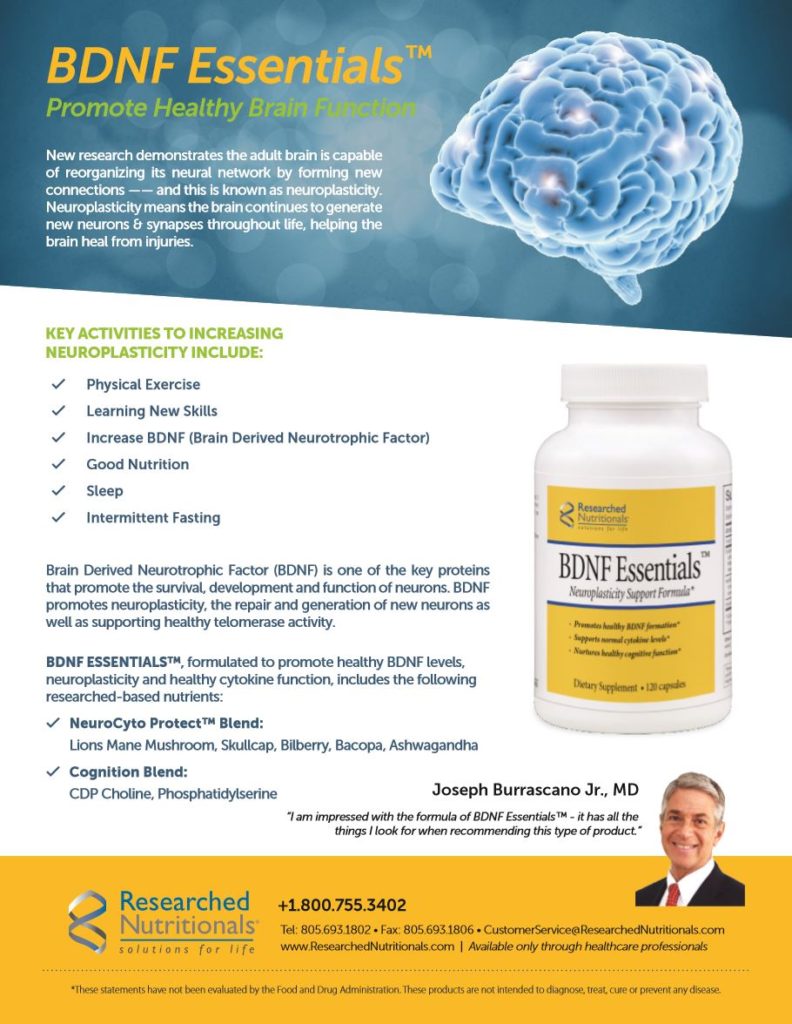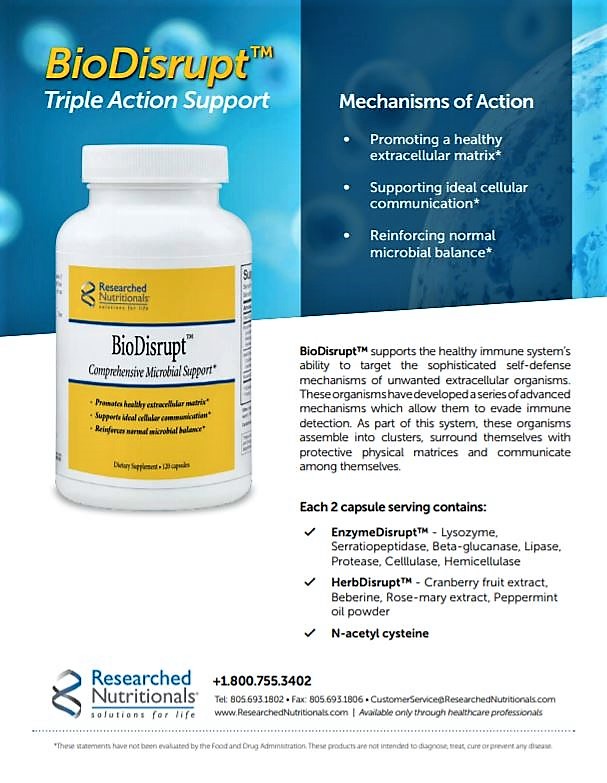by Aristo Vojdani, PhD, MSc, CLS
Immunosciences Lab, Inc.
Abstract: Accurate laboratory testing is a vital tool in the field of medicine. Great advancements have been made in lab testing methodology, but sometimes laboratories still get unreliable test results. This article looks at the advantages and disadvantages of the different methods of lab testing: radioimmunoassay, ELISA, Western Blot, Multi-Peptide ELISA, dot blot, and microarray. In comparing these methodologies, we conclude that although each different method has its advantages, all in all ELISA is still the gold standard, as radioimmunoassay uses hazardous materials, the dot blot assay cannot distinguish between equivocals and positives and negatives, and the microarray method, although a reliable technique for the detection of DNA or tumor markers, may suffer from limitations in the detection of antigens or antibodies. This is why for the detection of Lyme disease and many other disorders we prefer ELISA over many other immunological assays. Furthermore, we emphasize that in many cases it is not just the method (be it ELISA or microarray), but also what is used in the method, how it is used, and what sort of standards are followed. The goal of this article is to make the practitioner familiar with the four core principles of antigen-antibody assays: purity, optimization, validation, and replication. Familiarization with these principles will help the practitioners to differentiate between good versus bad lab practices. Otherwise, they will just fall for the next method that is touted as being new and improved, fast and convenient, no matter how grandiose and ridiculous the claims, such as a new hair test for food intolerance, which, for all my 50 years of work and experience, is beyond my comprehension as to how such a thing could actually be offered to people.
Introduction
I have spent half a century working in research and clinical laboratories. For 35 of those years, I have been the owner of my own clinical lab specializing in the field of immunology. I have personally developed more than 300 immunological assays and handled many thousands of blood samples for immunological assessments. In doing all the above I have been fortunate enough to become known as the father of functional immunology. I have been both gratified and honored many times when practitioners have called me to share the results of tests that they had done by other labs. Sometimes I’m surprised to find that the methodologies used for their tests were actually banned decades ago but have been recycled and brought back under deceptive new names.1 Some practitioners have also asked me why two labs using the same method can get two different results for the same patient, and I have to explain that labs may be using different testing materials, steps, preparations, procedures, parameters and so on, so that comparing test results from different labs could be like comparing apples and sausages, not even apples and oranges. Very recently I found out that there are so-called labs out there purporting to be able to test for food allergies or sensitivities to more than 700 foods using four or five strands of the patient’s hair through the wonders of biomagnetic resonance. Apparently, an MRI-like machine reads your hair and is able to tell you if you are allergic to 700-plus foods because your hair can carry 700-plus biomagnetic signatures! Do I have to tell you what this sounds like? Hair doesn’t even contain IgE or other antibodies. The goal of this article is to make practitioners familiar with the most reliable method for measuring antibodies in different specimens. The example given in this article is testing for Lyme disease, but the methodology could be applied to any disease.
Methods for Detecting Antigen-Antibody Reactions
The following different methodologies are used for the detection of antibodies: 1) Radioimmunoassay; 2) ELISA; 3) Western Blot; 4) Multi-Peptide ELISA; (MPE) 5) Dot Blot; 6) Microarray. Each of these methods has its advantages and disadvantages. Although Lyme disease is being used as an example here, these methodologies could also be applied to testing for allergies or autoimmunities.
Radioimmunoassay.
This is an in vitro process whereby a radioisotope-labeled antibody is usually added to antigen-coated tubes, microwells, or beads. If the antibody binds to the antigen, a complex is formed, and the radioactivity of the antibody is measured. The measured level of radioactivity is converted to the amount of antibody in the tested specimens. The radioimmunoassay is highly sensitive and specific. This method is also not restricted to merely serum or plasma; any biological material can theoretically be used in a radioimmunoassay. Obviously, due to the use of radiolabeled reagents, there are potential radiation hazards with this technique. This often means only specially trained individuals can handle this assay. Laboratories usually need extra licensure to handle this radioactive material as well as special protocols for storing and disposing of this material. Because of the possible exposure to radioactive materials, no matter how sensitive or specific this method is, many labs have stopped using this type of assay.2,3
Enzyme-Linked Immunosorbent Assay (ELISA)
In the ELISA method, enzymes are used instead of radioactive materials. ELISA is a colorimetric assay for accurate measurement of antibodies or antigens in blood and other clinical specimens. ELISA is an analytic biochemistry assay that uses liquid reagents during the “analysis” that will generate a signal that can be easily quantified and interpreted as a measure of the amount of analyte in the sample.4,5
Because of its simplicity, reproducibility and reliability, the ELISA method is the internationally recognized gold standard for antibody or antigen testing in the blood or other clinical specimens. It has been the standard for nearly 40 years and has helped form the clinical perspectives of healthcare professionals around the world.
There isn’t a modern clinical laboratory today that doesn’t use the ELISA or one of its descendants. In the ELISA assay, antigens are attached to the surface of a microtiter plate. Then, the patient’s serum is applied over the surface; if an antibody to the antigen is present, it will bind to the antigen-coated well. Then, a secondary antibody that is linked to an enzyme is added. In the final step, a substance containing the substrate to the enzyme is added. The subsequent reaction produces a detectable color that is measured with great accuracy by an ELISA reader. The ELISA technique was conceptualized and developed by Swedish scientists Peter Perlmann and Eva Engvall at Stockholm University in 1971. They were honored for their invention when they received the German scientific award of the “Biochemische Analytik” in 1976.4 Since then, many improvements have been done to increase the analytical sensitivity and specificity of the ELISA assay. Figure 1 shows the different steps involved in this reliable method.

Measurement of antibody against the agent of Lyme disease by ELISA: a classic example. Prompt diagnosis and treatment of Lyme disease (LD) is the key to avoiding chronic Lyme borreliosis and its serious effects on the human system. Diagnosis can be difficult because symptoms of LD share commonalities with amyotrophic lateral sclerosis (ALS), Alzheimer’s, autism, chronic fatigue, fibromyalgia, lupus, Parkinson’s, and RA. Therefore, it is crucial to combine clinical symptomatology with the most sensitive technique available to diagnose Lyme disease. Otherwise, if left undetected, Lyme disease may become chronic, and patients may develop Lyme arthritis and neuroborreliosis.
For the detection of Lyme disease, B. burgdorferi antigens are usually prepared from spirochetes grown in culture. After centrifugation and washing, the spirochetes undergo sonification to release their major antigens, such as outer surface protein A (OspA), immunodominant protein (C6), leukocyte function associated antigen (LFA), and outer surface protein C (OspC). In this ELISA, pure antigens without any chemical modifications are bound to the surface of a microtiter plate. Then, the patient serum is diluted with a special diluent and added to B. burgdorferi antigens bound to the ELISA plate wells. If antibodies to the microbe are present, they bind to the antigen in the coated wells and do not rinse off in the washing process. Subsequently, when enzyme-labeled anti-human IgG/IgM is added, it in turn binds to the immobilized antibodies that have bound with the antigens. After the washing and addition of a chromogenic substrate and stopping solution, samples containing IgG/IgM antibodies to B. burgdorferi produce a color endpoint reaction that will be read with an ELISA plate reader, and the results are read quantitatively.6
Because antigens prepared from B. burgdorferi grown in culture contain many impurities or cross-reactive antigens or peptides, it is possible for false positivity to result with some specimens. Thus, the issue is impurity of the antigen, not the ELISA methodology itself. This is why both the American CDC and European guidelines strongly recommend the two-tier approach. These two steps consist of a sensitive ELISA IgG, IgM, followed by Western Blotting of the samples that were found to be indeterminate (borderline positive) or positive in the first step. However, for patients infected in Europe, the testing should be performed with at least three pathogenic species, such as B. b. sensu stricto, B. b. garinii, and B. b. afzelii, all of which are part of the Multi-Peptide ELISA (MPE) performed by Immunosciences Lab.7,8
Lyme Western Blot Assay
The Western Blot (WB) assay has been widely used to detect the presence of antibodies in human serum and plasma to various infectious disease agents. In this procedure, component proteins of purified, inactivated bacteria or virus are electrophoretically separated by SDS-polyacrylamide electrophoresis followed by electrotransfer to nitrocellulose sheets. Each strip serves as the solid-phase antigen for an ELISA test. Specific antibodies present in human serum/plasma will bind to several of the separated polypeptides upon incubation with the strip. These antibodies are then treated with an enzyme-antibody conjugate that binds to the human antibody, if present. The final product is visualized upon incubation with a chromogenic enzyme substrate. This will result in a blue-colored “band” at the polypeptide location on the membrane strip if the specific human antibody is present. This assay, which detects Borrelia-specific peptide antibodies in human serum, was refined by different investigators who developed the criteria for a better diagnosis of Lyme disease.7,9
Interpretation of Results. According to the CDC/ASTPHLD working group, an IgG blot is considered positive (reactive) if five of the following ten peptide bands are present: p18, p23, p28, p30, p39, p41, p45, p58, p66, p93. An IgM blot is considered positive (reactive) if two of the following three peptide bands are present: p23, p39, p41. If the IgG or IgM antibodies against the above peptides are negative, the patient is considered non-reactive (see Figure 2).

The advantage of the Western Blot assay is that cross-reactive antibodies are excluded, and antigen-specific antibodies are observed against proteins of different molecular sizes.
The disadvantage is that the antibody reaction with each pure antigen can only be observed qualitatively, or simply a positive or negative, yes or no result.
Another disadvantage of WB is the nature of the antigens used in the assay, which are prepared from Borrelia grown in culture. Because antigens prepared from cultured Borrelia are not actually representative of the spirochete antigens expressed in the human body, this test may miss the detection of IgG and IgM antibodies against antigens such as variable major protein. Western Blot also does not measure antibodies against the decorin binding protein of B. burgdorferi sensu stricto, B. garinii, B. afzelii, and B. miyamotoi, and thus is not capable of detecting Lyme arthritis and neuroborreliosis.
In August of 2019 the CDC issued an updated recommendation for the two-tiered testing approach for Lyme disease.9 Whereas, as stated earlier in this article, the CDC’s previous recommendation was that an initial sensitive EIA or immunofluorescence test be followed by a supplemental Western immunoblot assay if the first test were equivocal, the new recommendation is that a second serologic assay using EIA rather than Western immunoblot assay is an acceptable alternative. The CDC made this update upon the approval of the FDA of four previously cleared Lyme disease tests, one of which tests for Variable Major Protein-like sequence E (VlsE), which is only one of the 12 antigens and peptides included in the patented Immunosciences Multi-Peptide ELISA panel.
Multi-Peptide ELISA (MPE)
Multi-Peptide ELISA (MPE) is the most sensitive method for the detection of Lyme disease and other tick-borne diseases (Babesia, Ehrlichia, Bartonella). MPE (US Patent 7,390,626 B2) measures antibodies to antigens of Borrelia grown in culture (the traditional method), as well as antibodies against antigens expressed in vivo, which Borrelia uses to invade the immune system during the process of human infection.
The antigenic diversity of Borrelia burgdorferi in the host suggests that antigenic variation plays an important role in immune invasion. Multi-Peptide ELISA or MPE uses not only antigens from Borrelia grown in culture but also a technique called in vivo induced antigen technology that detects this antigenic variation. This technique identifies pathogen antigens that are immunogenic and expressed in vivo during human infection. Utilization of this technique increases the accuracy of the diagnostic process and abridges the time of treatment, resulting in improved quality of care.10,11
The MPE uses particular peptides from various components of Borrelia during different cycles, including peptides from outer surface proteins A, C and E, leukocyte function associated (LFA) antigens, immunodominant antigens, variable major proteins, and peptides from decorin-binding proteins of Borrelial subspecies (B. sensu stricto, B. afzelii, B. garinii, B. miyamotoi), and co-infections such as Babesia, Ehrlichia and Bartonella. This test is not only capable of detecting Lyme disease reliably but can also assist in the detection of Lyme arthritis and neuroborreliosis, which are two major manifestations of chronic Lyme disease.
Dot Blot Assays

The immunoblot assay or dot blot is a qualitative variation of the ELISA test that uses impure or a mixture of antigens. Instead of binding antigen to microplate wells, antigen is covalently bound directly to a nitrocellulose or nylon membrane (see Figure 3) and is detected with labeled primary antibody, or indirectly with labeled secondary antibody. The result can only be a positive or negative (yes or no) reaction. This means this method cannot distinguish between positive, negative, and equivocal, borderline, or weakly positive results.12,13 Note that while the dot blot assay can easily distinguish between negative (0 ng) and positive (10 ng), it has more difficulty in distinguishing between 1 ng and 10 ng of antigens that were bound to the matrix.
Microarray Assays
The need to quantify the qualitative results of the dot blot test led to the development of the microarray method, which converts the dot blot signal to a number. A microarray is a high-throughput miniaturized ELISA-based platform for efficient detection of nucleic acids and protein expressions in various types of clinical specimens. It is a 2D array on a solid substrate (usually a glass slide or silicon thin-film cell) that assays large numbers of biological materials. Using this technology, a tiny amount of biochemical, (protein, antibody, etc.) is spotted and fixed on a solid surface such as a microchip (silicon thin-film cell), glass, or plastic and the interaction between the biochemical, and its target protein (antigen), is detected via a light reader.

As I mentioned above, the basic principle of microarray is the dot blot assay. However, in the microarray method, instead of binding the antigens to a membrane or paper strip, hundreds of antigens can be bound to microscope-size slides, which requires very special chemistry. This chemistry may not be suited for every single protein or peptide. Many harsh chemicals are used to bind the antigens to the glass. The harsh process affects the tertiary structure of proteins and may result in either lack of binding (false negative), or excessive binding of the antibodies in the blood to the chemically modified antigens on the chip. In contrast, with the ELISA assay the antigen is bound to the microplate surface without any chemical treatment. Furthermore, the dot blot is miniaturized in order to save reagents. For example, if five micrograms of antigen worth ten dollars are used in a normal ELISA test, in a microarray the amount of antigen used would be about 100-fold less, say about 50 nanograms of antigen worth ten cents. At the end of the assay procedure, the microarray attempts to improve on the dot blot methodology by taking the qualitative yes or no results and converting them to quantitative results; this requires the use of additional equipment and mathematical formulation and calculation, opening the possibility of conversion error. For these reasons, microarray technology is currently considered experimental and is recommended for the detection of very small quantities of DNA or tumor markers in the blood, not for the determination of high levels of antibodies that are present in the blood in milligram amounts. Additionally, the miniaturization of the sample means that there is a small area for antigen binding. When a mixture of proteins is added to this minuscule space, some antigens may not bind to the slide, and the test may thus end with false negative results.
The concept and methodology of microarrays was first introduced and illustrated in antibody microarrays (also referred to as antibody matrix) by Tse Wen Chang in 1983 in a scientific publication and a series of patents.14 The “gene chip” industry started to grow significantly after the 1995 Science Paper by the Ron Davis and Pat Brown labs at Stanford University.15

However, in the December 2018 issue of CAP Today, the monthly news magazine of the College of American Pathologists (CAP), one of the main regulatory and certification bodies for laboratories, an article said: “In allergy testing, microarray technology offers speed and the benefit of smaller sample volumes, but it has a lower sensitivity and is unable to detect IgE antibodies of all specificities in a given extract unless all allergens are on the chip. For routine use, singleplex assays are here to stay.” Thus, the same article concluded that “Microarray technology will remain a wonderful research tool but will probably not emerge into the clinical world in a serious way for a variety of reasons,” among them a lack of FDA approval, said Robert G. Hamilton, PhD, D.ABMLI, director of the Dermatology, Allergy, and Clinical Immunology Reference Laboratory at Johns Hopkins University School of Medicine.16

It should be noted that after more than three decades the microarray system is still regarded only as promising technology. For now, the process involved in microarray testing shows a comparatively greater chance of irreproducible results, as shown in Figures 4 and 5. For these exact reasons, we recommend the gold standard ELISA method, not microarray, for the detection of Lyme disease and other infectious agents.
Even if, in the future, microarray technology should achieve the standard set by ELISA, the reliable reporting of laboratory test results will still depend not just on the nature of the assay but also on what you put into the test or how meticulously the test is performed. This is why I spent years developing and perfecting the 4 Core Principles17 for the reliable reporting of laboratory test results (Figure 6).

1. Purity of the antigen – The ELISA test or any other method for testing antigen-antibody reaction depends on the purity of the antigen. The quality and reliability of a test’s results are only as good as the purity of the antigen used in the assay.
2. Optimized antigen concentration – Some labs blindly use the same volumes but not the same concentrations for the different antigens used for antibody measurements, assuming that apple and peanut both contain the exact same amount of protein. The problem with this is that indiscriminately using the same volume for all antigens runs the risks of false positivity and false negativity, even if two different foods did contain the same amount of protein, unless conditions were optimized for each antigen during assay development. If not, this may increase the risk of obtaining erroneous results.
3. Individual antigen-antibody validation – Many labs do not validate their tests or validate them improperly. This goes against the Federal Clinical Laboratory Improvement Amendments (CLIA) regulations, which state that each method must have validated performance specifications for “accuracy, precision, analytical sensitivity and specificity; the reportable range of patient test results; the reference ranges; and any other applicable performance characteristic.” All of these performance specifications should be applied to each and every individual antigen or protein. Unfortunately, some labs validate up to hundreds of proteins together by generating standards from one particular protein and then comparing the others to this one protein. It would be like using wheat protein to generate a standard curve, then using that curve for 99 other proteins, which puts those 99 at a disadvantage. Each antigen has to be validated against its own standard, wheat to wheat, Epstein-Barr to Epstein-Barr, and so on, in order to accurately report the results.

4. Duplicate or parallel testing – Each test should be run side-by-side or run twice. Many steps are involved in testing, and a potential for error exists with each step. One way to guard against these errors is to run duplicates from the same patient’s sample in side-by-side wells on the same plate. If the results from the 2 determinations correlate, they can be reported. If not, the problem should be investigated and corrected before reporting results. This is particularly important for microarray. Due to the irreproducibility of microarray from dot to dot, many researchers perform this test in quadruplicate so as to reduce the probability of error in their calculation of the results. This dot-to-dot irreproducibility can reach such a degree that it can take as much as ten repeats of microarray testing to come up with an acceptable result, as one group did when testing for allergy.18 How many replicates do you think commercial clinical labs are using in their microarray assays?
Finally, we labs cannot hide behind blanket claims that we are approved by this and that institution. Our own lab does take pride in the fact that it is inspected and approved by the College of American Pathologists, and rightly so. That being said, there are legitimate limits to the oversight provided by state regulations and requirements. We have put forth these four core principles of immunology lab testing and have given solid reasons as to why they MUST be observed by a lab in order to produce reliable, accurate, reproducible results. It is the responsibility of a truly professional lab to go beyond mere compliance of any regulatory body and to always strive for excellence so as to provide the maximum quality of service for its clients. Only by following the four core principles of antigen-antibody assays can labs provide dependable results that practitioners can use for the betterment of their patients.
Comparative Analysis of Methods
In sum, then, the ELISA method still stands as the industry’s gold standard because of its reliability, reproducibility, accuracy, and ability to produce quantitative results. The Western Blot method offers the advantages of specific antibody reaction to antigens based on molecular size but can only offer qualitative results, and its inability to distinguish between weak and strong reactions may generate false positives and negatives by an individual who reads the test results incorrectly. The microarray system has the advantage of speed and multiple antigens but has been notably cited for low rate of reproducibility due to variation from dot-to-dot because of the chemistry involved and the minute quantities of antigens contained on the sample chips. In contrast, the Multi-Peptide ELISA offers the advantages of the ELISA method’s reliability, reproducibility and accuracy, which produces quantitative results for antibodies that are generated against different highly pure antigens and peptides derived from B. burgdorferi, its subspecies and co-infections simul-taneously.
References
1. Vojdani A, Vojdani E. Chapter 6, Testing for food allergy versus food immune reaction and autoimmunity: Challenging the status quo. In: Vojdani A, Vojdani E, eds. Food-Associated Autoimmunities: When Food Breaks Your Immune System. 1st ed. Los Angeles, CA: A&G Wilshire; 2019:143-194.
2. Goldsmith SJ. Radioimmunoassay: a review of basic principles. Semin Nucl Med. 1975;5(2):125-152.
3. Grange RD, Thonpson JP, Lambert DG. Radioimmunoassay, enzyme and non-enzyme-based immunoassays. Brit J Anaesthesia. 2014;112(2):213-216.
4. Engvall E, Perlmann P. Enzyme-linked immunosorbent assay (ELISA). Quantitative assay of immunoglobulin G. Immunochemistry. 1971; 8(9):871-874.
5. Liang FT, et al. Sensitive and specific seriodiagnosis of Lyme disease by Enzyme-Linked Immunosorbent Assay with a peptide based on an immunodominant concerved region of Borrelia burgdorferi VlsE. J Clin Microbiol. 1999;37:3990-3996.
6. Steere AC, et al. Prospective study of serologic tests for Lyme disease. Clin Infect Dis. 2008;47:188-195.
7. CDC Lyme Disease, Diagnosis and testing. https://www.cdc.gov/lyme/diagnosistesting/index.html
8. Eldin C, et al. Review of European and American guidelines for the diagnosis of Lyme borreliosis. Med Mal Infect. 2019; 49(2):121-132.
9. Mead P, Petersen J, Hinckley A. Updated CDC recommendation for serologic diagnosis of Lyme disease. Morb Mortal Wkly Rep 2019;doi:10.15585/mmwr.mm6832a4external.
10. Vojdani A, et al. Novel diagnosis of Lyme disease: potential for CAM intervention. eCAM. 2009;6(3):283-295.
11. Vojdani A, Raxlen B, Scott S. In vivo-induced antigen technology: the most sensitive method of detection for Lyme disease and other tick-borne diseases. Townsend Letter, 2007 April:107-113.
12. Engstrom SM, Shoop E, Johnson RC. Immunoblot interpretation criteria for serodiagnosis of early Lyme disease. J Clin Microbiol. 1995;33:419-427.
13. Glatz M, et al. Immunoblot analysis of the seroreactivity to recombinant Borrelia burgdorferi sensu lato antigens, including VlsE, in the long-term course of treated patients with erythema migrans. Dermatology, 2008;216:93-103)
14. Chang TW. Binding of cells to matrixes of distinct antibodies coated on solid surface. J Immunol Methods. 1983; 65(1-2):217-223.
15. Schena M, et al. Quantitative monitoring of gene expression patterns with a complementary DNA microarray. Science. 1995;270(5235):467-470.
16. Aquino AC. Multiplex for allergy dx: powerful, but it has its place. CAP Today. 2018, 16 December.
17. Vojdani A, Vojdani E. Chapter 6, Testing for food allergy versus food immune reaction and autoimmunity: Challenging the status quo. 6.7.2 The 4 Core Principles of Laboratory Testing In: Vojdani A, Vojdani E, eds. Food-Associated Autoimmunities: When Food Breaks Your Immune System. 1st ed. Los Angeles, CA: A&G Wilshire; 2019:179-189.
18. Feyzkhanova G, et al. Development of a microarray-based method for allergen-specific IgE and IgG4 detection. Clin Proteome. 2017;14:1.










